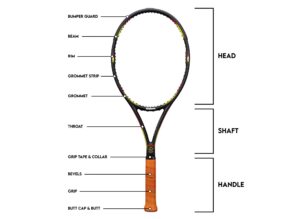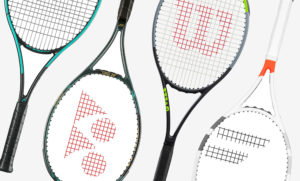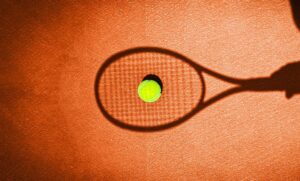Looking at it in a simple way, tennis can be considered as two core parts: serving and returning. When serving, we have full control over what happens with the first shot. But what about when we’re returning?
The return of serve is crucial to winning tennis matches. Just one break of serve can make the difference in a match, and making sure it goes your way and not the way of your opponent isn’t exactly easy. That being said, if you nail everything you can do on your end, you are much more likely to put your opponent under a bit of pressure on the other side of the net.
For that very reason, we’ve put together a simple step guide to the return of serve.
How to Return a Serve in Tennis in 6 Simple Steps
The return of serve can be broken down into 6 simple steps, which are common to every return of serve. Although these steps alone won’t get you the return of serve of Novak Djokovic, they’ll set you up with a solid return of serve which you can then perfect with some of the smaller and less obvious tweaks.
Step 1: Court Position
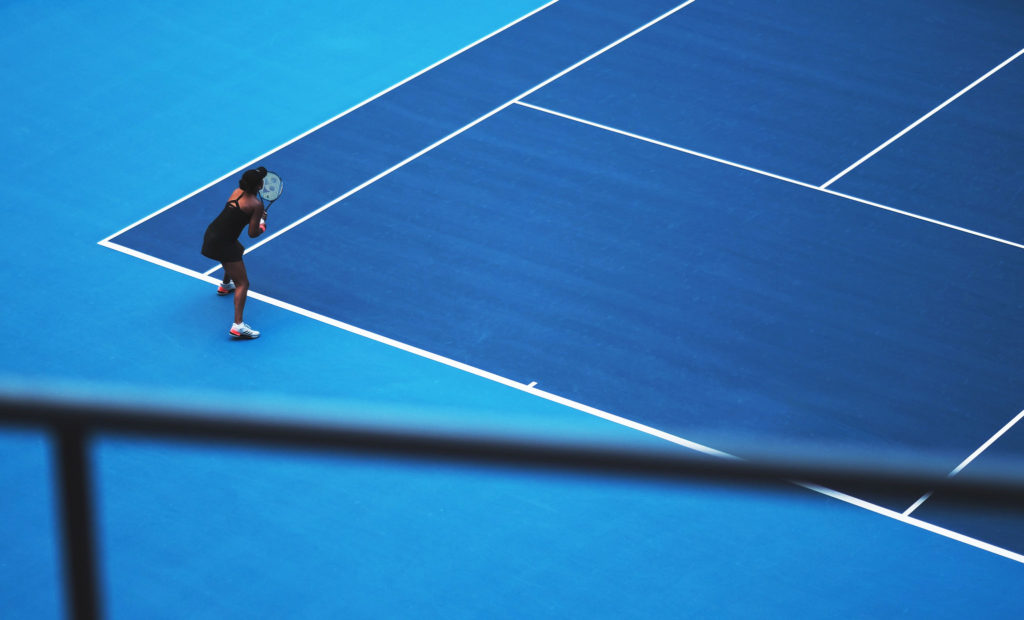
Let’s start with the easy bit: your position on the court. As a general rule of thumb, you’ll want to position yourself inline with the centre of the service box, and then adjust based on who is serving at the other end of the net. If your opponent is right handed, their serves will naturally tend to drift toward the right. So, when returning from the deuce court, standing a little closer to the tramline will help you cover the most extreme serve out wide. When returning from the ad court, you’ll want to factor in the same spin. This time though, the most extreme serve will likely be down the T, meaning you should stand a little further away from the tram and a little closer to the T. These are of course just starting points. You’ll learn to adjust your return position based on your particular preferences and the serve of your opponent.
In terms of the depth, follow logic. A weak serve means you’ll probably be able to step into the court to take the ball a little earlier. A big serve will require you to stand a little further back to give yourself more time. A good neutral starting point tends to be about a metre behind the baseline.
Step 2: Ready Position & Grip
This phase is all about getting into a ready position, which will give you the best chance of quickly adapting your shot to the serve. In simple terms, it involves facing your opponent and holding your racquet high, ready to hit the return of serve.
In terms of the grip, It depends very much on your personal taste. Most players will grip the racquet with a continental grip, as it’s a neutral grip that will quickly allow them to switch between a forehand and a backhand grip. This is particularly the case for players with a two handed backhand. The continental grip is also a great option for a defensive chip return.
Step 3: Preparation & Split Step
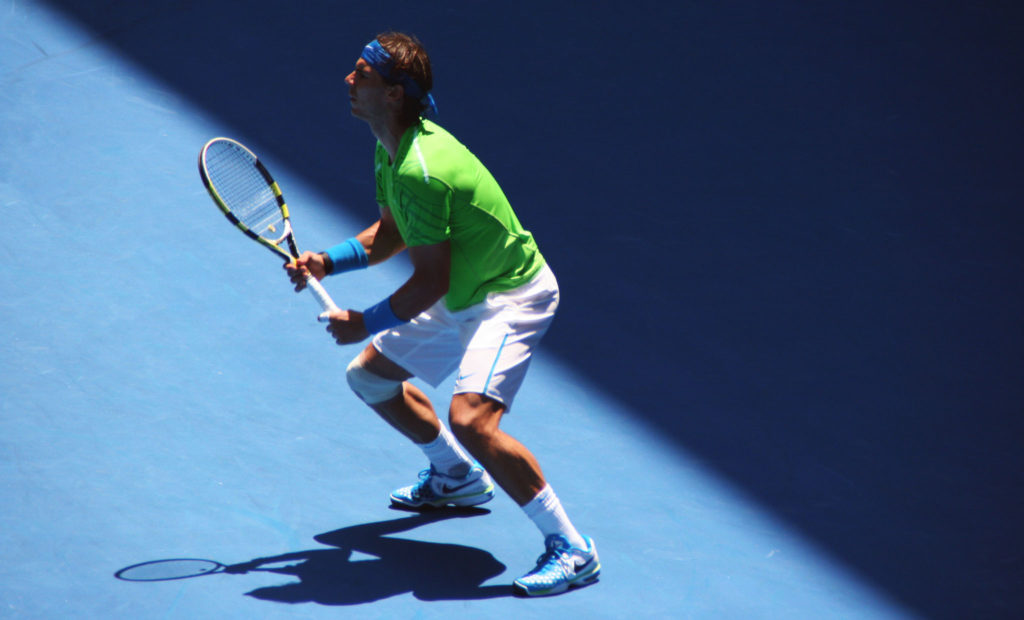
The split step, which could be considered more of a hop than a step, is a move players make in the lead up to hitting the ball, and applies to both rallies and the return of serve. It involves “hopping” forward slightly onto both feet positioned a little more than shoulder width apart. After this, players bend their legs, lowering their centre of gravity and creating a solid base stance that enables them to push of both feet in the direction of the ball. During the return of serve, tennis players will split step as their opponent tosses the ball up in their service motion. As the server strikes the ball, the returner then pushes off the ground in the direction of the ball.
It is a subtle move often missed or overlooked by the vast majority of club level tennis players. That being said, the split step is one of the most important elements of the return of serve and plays a crucial part in high performance tennis.
Step 4: Takeback & Swing
The take back simply involves moving the racquet to the side of your body, be it on the forehand or backhand side. Quick reactions and, once you have more experience, reading the serve will help you decide whether to hit a forehand or backhand in the blink of an eye.
The most important thing is to keep the take back short and quick, particularly against big serves. The biggest mistake made at this stage is to attempt to go for a big swing, which usually results in players hitting the ball late and eventually missing the return of serve. Instead, concentrate on trying to meet the ball rather than hitting the ball. This is a method often used by advanced tennis players and is particularly useful when the serve carries a lot of pace. Simply using the power on the serve and “pushing” it back is often enough.
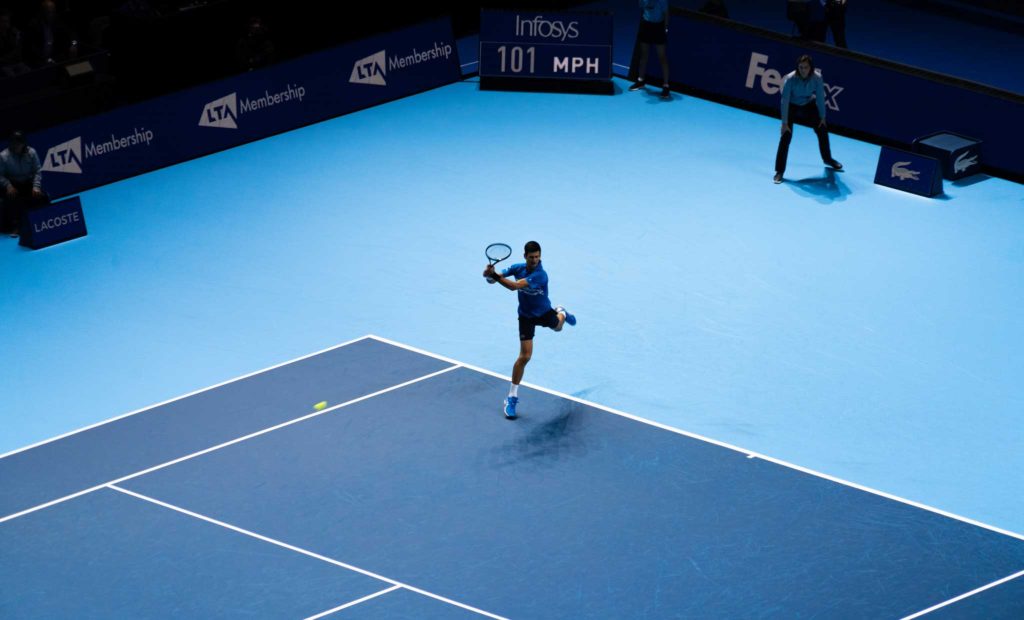
Step 5: Shot Placement
The ultimate goal of a return is actually to neutralise the opponents serve and set yourself up for a neutral rally where you’ll get the chance to be in control and eventually win the point.
Many jump at the opportunity of hitting a big return and start taking massive swings and aiming for the lines. It will come as no surprise that very few of those returns actually achieve the goal of hitting a winner past the opponent. Instead, the key lies in consistently getting the return back and placing it deep in the court. This will hopefully completely cancel out your opponents advantage of serving and maybe even put them on the back foot. Of course, if your opponent has a weak second serve, attacking it and aiming a little closer to the lines can be a great way of taking control of the point.
Step 6: Recovery
Given you are unlikely to be hitting winners off of the return of serve, your recovery after hitting the shot is crucial. Depending on your opponents serve, you may be dragged wide off the court, leaving a big empty space on the court for your opponent to hit into. As you would during a rally, it is important to quickly recover to the centre of the baseline and prepare to receive the next shot. This recovery also applies to your depth on the court, as returning a serve to the centre of the court and staying to far behind the baseline can expose you to drop shots.
Putting it all together should look something like this…
And that’s pretty much it. As said before, nailing these six simple steps will go a long way in helping you to break your opponents serve and give you a great chance of winning matches. Once the basics have been mastered, learning to read your opponents’ serve is just one of the many steps you can take to mastering the tennis return of serve.


